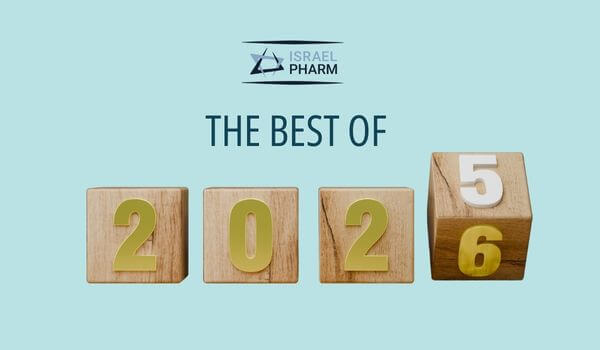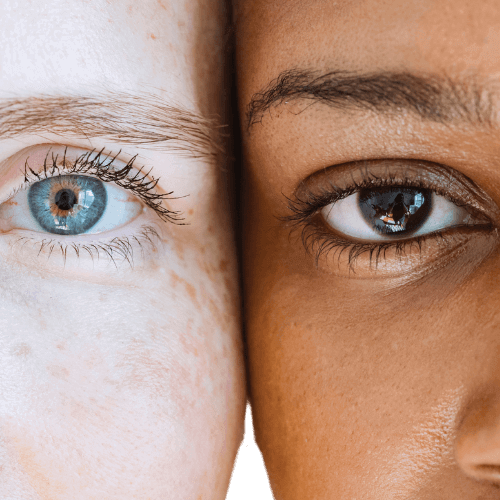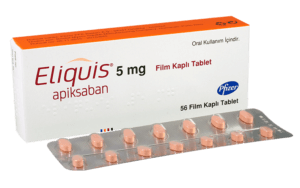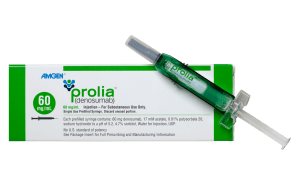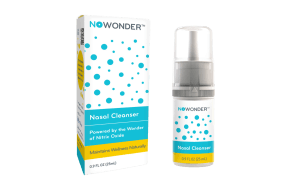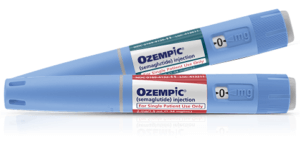
Mental health conditions don’t always show up the way they were expected. They might surface as a racing mind that won’t slow down, an overwhelming urge to check and recheck, or a profound fatigue that even sleep can’t address. Sometimes they follow a regular pattern, and sometimes they arrive without warning. Why mental health matters? Simple: it can interfere with how we feel, think, and function.
Good news can be found once we realize that these conditions are real and need not be pushed out of sight due to a lack of understanding.
In this series, we’ve explored six common areas where addressing mental health matters: depression, anxiety, insomnia, seasonal affective disorder (SAD), obsessive-compulsive disorder (OCD), and bipolar disorder. For each, I tried to break down and explain the key symptoms, possible causes, and the range of treatment options, from medication and therapy to lifestyle tools and alternative approaches.
Understanding the issues around mental health isn’t just helpful, it’s empowering. Whether you’re navigating your own challenges or supporting someone else, with the right knowledge of how to address mental health matters, we can both offer clarity, hope, and a path forward.
Let’s go through them one by one, beginning with one of the most widespread conditions: depression.
Depression

Any comprehensive overview of depression must emphasize that it is not just a fleeting sadness, but a complex, persistent condition that affects every aspect of life. It must deal with the core symptoms of depression, which include:
- Persistent feelings of emptiness, hopelessness, or sadness
- Loss of interest in previously enjoyed activities
- Fatigue and low energy
- Sleep disturbances (either insomnia or oversleeping)
- Appetite and weight changes
- Feelings of guilt or worthlessness
- Difficulty concentrating or making decisions
- Thoughts of self-harm or suicide.
Depression can manifest differently in individuals, ranging from numb detachment to overwhelming emotional pain. The article stresses that these experiences are valid and not signs of personal failure.
Causes of depression are presented as multifactorial. These include:
- Biological imbalances in neurotransmitters like serotonin and dopamine
- Genetic predisposition and family history of mental illness
- Environmental stressors such as loss, trauma, or prolonged pressure
- A mix of situational and internal factors creating a “perfect storm” for onset.
The treatment options explored fall into several main categories:
- Psychotherapy
-
- Cognitive Behavioral Therapy (CBT): Addresses thought patterns contributing to low mood
- Interpersonal Therapy (IPT): Focuses on relationship stressors
- Psychodynamic Therapy (PT): Explores past experiences and emotional triggers.
- Medication
-
- Selective Serotonin Reuptake Inhibitors (SSRIs) such as Prozac, Zoloft, and Escitalopram, which are commonly prescribed and well-tolerated
- Serotonin-Norepinephrine Reuptake Inhibitors (SNRIs) like Effexor XR, Cymbalta) are often used in more severe cases
- Tricyclic antidepressants (TCAs) like Elavil and Monoamine oxidase inhibitors (MAOIs) are older classes reserved for treatment-resistant cases
- Supplements that can help restore sleep patterns, like the Sleep Pack.
- Lifestyle Interventions
-
- Regular physical activity
- Nutritional support, especially omega-3-rich foods
- Quality sleep and rest
- Meditation and mindfulness practices.
- Alternative and Advanced Therapies
-
- TMS and ECT for treatment-resistant depression
- Ketamine therapy for rapid relief of severe symptoms
- Vagus nerve stimulation (VNS) as a device-based option.
In the article, I identified support systems, therapy, and small lifestyle changes as key to recovery, and it ends by reminding readers that even though it is daunting, depression is treatable, and reaching out is a powerful first step.
Anxiety
Mana
We focus on generalized anxiety and its disruptive impact on everyday life, beginning by describing common symptoms of anxiety disorders, including:
- Constant, excessive worry not tied to specific events
- Restlessness or feeling “on edge”
- Difficulty concentrating or experiencing brain fog
- Muscle tension, sweating, rapid heartbeat
- Sleep disturbances (difficulty falling or staying asleep).
The physical and mental symptoms of anxiety can often be misunderstood or minimized, but it helps to stress that anxiety disorders are real, diagnosable conditions with biological underpinnings.
Causes of anxiety are described as stemming from a blend of:
- Brain chemistry, particularly overactivity in the amygdala and imbalances in serotonin and norepinephrine
- Genetics, where there is a family history of anxiety or related disorders
- Environmental triggers coming from traumas, major life changes, or chronic stress.
In the article we pay special attention to highlight Perinatal Anxiety, or PMAD (Perinatal Mood and Anxiety Disorders), which affects up to 20% of mothers during or after pregnancy.
Treatments are categorized as pharmacological and non-pharmacological:
Pharmacological Treatments
- SSRIs: Zoloft, Prozac, Escitalopram/Citalopram
- SNRIs: Effexor XR and Cymbalta, which affect norepinephrine levels as well
These medications help stabilize neurotransmitter levels but may take several weeks to work.
Non-Pharmacological Treatments
- Cognitive Behavioral Therapy (CBT)
- Mindfulness and meditation techniques help calm overactive thoughts
- Supplements that can help restore sleep patterns, like the Sleep Pack
- Lifestyle changes.
People are encouraged to view anxiety as manageable, and to seek support, from a professional or even a friend or family member is an essential and empowering step toward accepting that your mental health matters both to you and to others.
Seasonal Affective Disorder (SAD)
Seasonal Affective Disorder (SAD) is described as a specific type of depression linked to seasonal changes, primarily occurring in the fall and winter months. Key symptoms include:
- Persistent sadness, hopelessness, or emotional numbness
- Low energy and excessive fatigue
- Oversleeping (hypersomnia) but still feeling unrested
- Strong cravings for carbohydrates and associated weight gain
- Social withdrawal and reduced motivation.
There are biological mechanisms believed to contribute to SAD:
- Reduced sunlight leads to decreased serotonin levels, affecting mood regulation
- Increased melatonin production due to longer nights contributes to fatigue and disrupted sleep
- Circadian rhythm disturbances impair the body’s natural sleep-wake cycle.
Treatment options include both medications and lifestyle interventions:
- Pharmacological Treatments
- SSRIs: Prozac, Zoloft, and Paxil are often prescribed
- Wellbutrin XL is specifically approved for seasonal depression and may be started before symptoms begin.
- Non-Pharmacological Treatments
- Light Therapy: Daily use of a 10,000-lux light box (especially in the morning) can significantly improve mood
- Vitamin D Supplementation: Since sunlight is a natural source, supplements (1,000–2,000 IU) are recommended during darker months
- CBT: Helps identify negative seasonal thought patterns and reframe them
- Outdoor activity: Spending time outside, even on cloudy days, helps increase light exposure and lift mood
- Dietary adjustments: Omega-3-rich foods and tryptophan-containing foods (e.g., turkey, eggs) support serotonin production. Calmanervin can also help to deal with stressful situations that can lead to anxiety and panic attacks.
In the article, I concluded by emphasizing that SAD is both common and highly treatable. By identifying symptoms early and committing to a proactive treatment plan, people can maintain their well-being year-round, even through the darker seasons.
Obsessive-Compulsive Disorder

This article provides a clear and compassionate overview of Obsessive-Compulsive Disorder (OCD), a condition often misunderstood or trivialized. At its core, OCD involves two key components: obsessions and compulsions.
- Obsessions are persistent, unwanted thoughts, images, or urges that create anxiety. Common themes include fear of contamination, doubts about safety (e.g., “Did I leave the stove on?”), moral or religious fears, and a need for symmetry or order.
- Compulsions are repetitive behaviors or mental rituals performed to reduce the anxiety caused by obsessions. These may include excessive handwashing, checking locks or appliances, counting, or mentally reviewing events for reassurance.
These symptoms can be time-consuming and interfere significantly with work, relationships, and daily life. Many people with OCD recognize their thoughts or behaviors are irrational, but feel powerless to stop them.
Causes of OCD are described as multifactorial:
- Brain chemistry: OCD is linked to low levels of serotonin, which disrupts mood regulation and increases anxiety
- Neurological factors: Brain scans show increased activity in areas related to decision-making and emotional control
- Genetic predisposition: OCD tends to run in families
- Environmental triggers: Life stress, trauma, and even certain childhood infections (like strep, in the case of PANDAS) can trigger or worsen symptoms.
Treatment options include both therapy and medication:
Non-Pharmacological Treatments
- Exposure and Response Prevention (ERP): A specialized form of Cognitive Behavioral Therapy (CBT), considered the gold standard. It involves gradual exposure to anxiety triggers while preventing the compulsive response
- General CBT: Helps individuals identify distorted thought patterns and reframe them
- Mindfulness and Acceptance-Based Therapies: These encourage people to accept intrusive thoughts without acting on them.
Medications
- SSRIs: These are the most commonly prescribed drugs for OCD and typically require higher doses than those used for depression.
- Luvox: Most effective, but sedating and prone to interactions
- Zoloft: Effective with fewer side effects
- Prozac: Useful for treatment-resistant cases
- Paroxetine (Paxil): Effective, but often poorly tolerated due to sedation and weight gain
- Escitalopram/Citalopram: Less effective for OCD but better tolerated.
- Anafranil: A tricyclic antidepressant also used for OCD, often effective but with more side effects.
- Augmentation Therapies
We concluded by emphasizing that OCD is treatable, even when severe. With early diagnosis, a structured treatment plan, and consistent support, individuals can significantly reduce the impact of OCD and regain a sense of control over their lives.
Bipolar Disorder
This article offers an in-depth look at bipolar disorder, a chronic mental health condition marked by extreme mood swings, from mania to depression, and sometimes periods of stability in between.
The condition is divided into subtypes:
- Bipolar I Disorder: Characterized by full-blown manic episodes, often requiring hospitalization
- Bipolar II Disorder: Involves hypomania (a milder form of mania) and major depressive episodes
- Cyclothymic Disorder: Involves chronic mood fluctuations that don’t meet the criteria for full mania or depression.
Symptoms of Mania (especially in Bipolar I):
- Elevated or irritable mood
- Increased energy and activity
- Decreased need for sleep
- Racing thoughts and rapid speech
- Impulsive behaviors (e.g., reckless spending, risky sex)
- Delusions or hallucinations in severe cases.
Symptoms of Bipolar Depression:
- Persistent sadness and hopelessness
- Fatigue and low energy
- Sleep and appetite changes
- Loss of interest in activities
- Suicidal thoughts.
Mixed episodes
- Symptoms of both mania and depression simultaneously
- Rapid cycling, with four or more mood episodes in a year.
Causes include:
- Genetics: Strong familial component
- Brain chemistry: Imbalances in neurotransmitters like dopamine and serotonin
- Environmental stressors: Trauma, major life changes, and substance abuse can trigger episodes.
Diagnosis is based on clinical interviews, mood history, and sometimes medical tests to rule out other conditions. Tools like the Mood Disorder Questionnaire and Hamilton Depression Rating Scale may be used to pinpoint mental health matters.
Treatment Options include medication, therapy, and lifestyle changes:
- Mood Stabilizers
- Atypical Antipsychotics
- Antidepressants
- Used cautiously and always in combination with mood stabilizers to prevent mania
- Wellbutrin XL is often favored due to lower mania risk.
- Therapy
- CBT: Helps manage symptoms and identify mood triggers
- Psychoeducation: Supports long-term management
- Consistent sleep routines and lifestyle regularity are strongly encouraged.
I emphasized that while bipolar disorder has no cure, long-term stability is achievable with the right treatment plan. Education, early intervention, and strong support systems make a significant difference.
Insomnia
Insomnia is described here not just as an occasional inconvenience, but as a chronic condition that impacts energy, mood, and overall functioning. The article breaks down the types and symptoms of insomnia:
- Difficulty falling asleep
- Waking frequently during the night
- Early morning waking with an inability to return to sleep
- Daytime fatigue, mood swings, irritability, and poor concentration.
When sleep disturbances persist for more than three months, it’s classified as chronic insomnia.
Causes include:
- Mental health conditions: Anxiety, depression, and stress often disrupt sleep
- Poor sleep habits: Late-night screen use, irregular schedules, caffeine or alcohol use before bed
- Medical issues: Pain, hormonal changes, restless leg syndrome, and sleep apnea.
Treatment options are divided into pharmacological and behavioral strategies:
- Medications
- Prescription sedatives are useful short-term but carry a risk of dependency
- Melatonin supplements like Circadin help regulate sleep-wake cycles, particularly for shift workers or jet lag
- Antidepressants/anti-anxiety medications like SSRIs and SNRIs can be useful if insomnia is linked to mood disorders.
- Non-Pharmacological Treatments
- Cognitive Behavioral Therapy for Insomnia (CBT-I): Helps identify and change thought patterns that interfere with sleep
- Sleep hygiene practices: Consistent schedules, calming bedtime routines, and minimizing stimulants
- Non-sleep deep rest (NSDR): A guided meditation technique promoting brain relaxation, inspired by Yoga Nidra and supported by neuroscientist Andrew Huberman
- Relaxation techniques: Deep breathing, progressive muscle relaxation, and mindfulness.
- Supplements
- Products like the Sleep Pack (melatonin, magnesium, theanine) may support natural sleep rhythms and relaxation.
The key message is that overcoming insomnia takes time and consistency. Medications can help in the short term, but lasting improvement usually comes through behavior change, good sleep practices, and addressing any underlying issues.
Conclusion – A Collaborative Approach to Mental Health
Mental health conditions such as depression, anxiety, insomnia, SAD, OCD, and bipolar disorder are increasingly recognized as critical aspects of overall health. While each condition has unique challenges, they share common themes: they are often treatable with a combination of pharmacological and non-pharmacological interventions.
The key takeaway is that mental health is not a solitary journey—it requires a collaborative approach involving patients, healthcare providers, families, and communities. Medications can be life-changing, but they work best when paired with therapy, lifestyle changes, and support networks. By fostering understanding and reducing stigma, we can create an environment where people feel empowered to seek the help they need.


 Highs, Lows, and In Between
Highs, Lows, and In Between Reclaiming Restful Sleep
Reclaiming Restful Sleep
